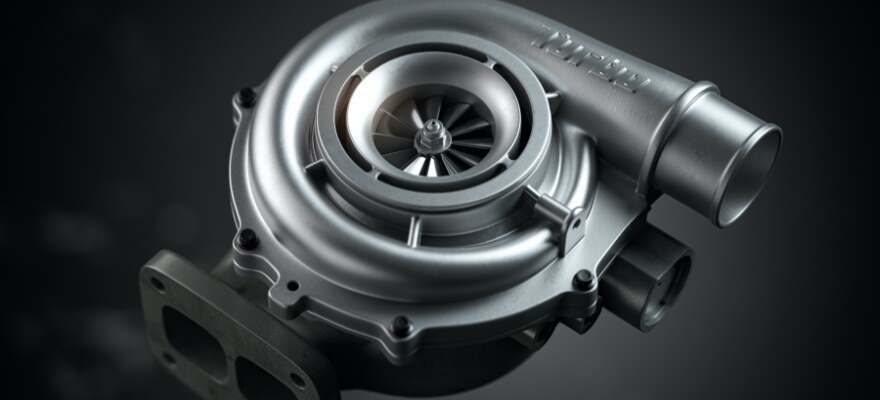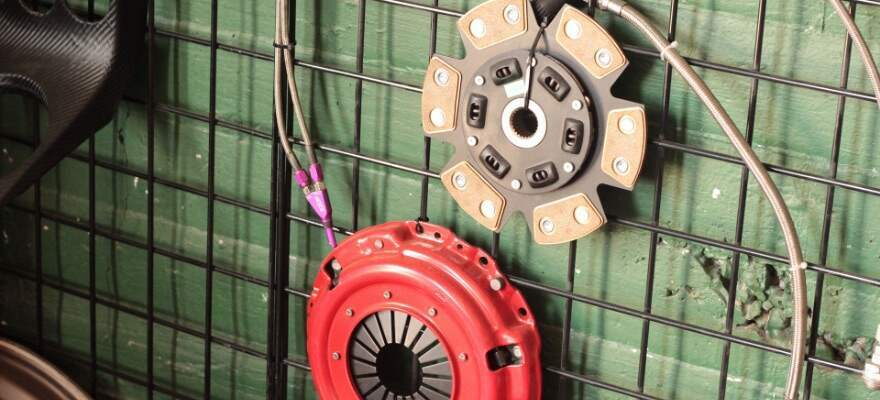Two Paths To Power
Whether you're talking about a turbo or a supercharger, the goal is the same, although they follow different roads to get there. First, think of your engine basically as an air pump (yeah, we know it's an oversimplification). The air you can pump equates to the amount of power you can generate — more air means more power. In a previous article about crankshafts vs. camshafts, we provided a very rudimentary example of how all internal combustion engines function. To review, car engines operate through a perpetual cycle of four strokes:
- Intake Stroke: The cylinder moves down to pull in air and fuel.
- Compression Stroke: The piston moves up to compress the mixture of fuel and air.
- Power Stroke: The air/fuel mixture is ignited, and the piston is forced down.
- Exhaust Stroke: The piston moves up once again to push out the leftover air in the form of exhaust.
As you can see, air is a component of each stroke. The goal, then, for superchargers and turbochargers is to increase the airflow through the engine to produce more power.
What Is a Turbocharger?

Turbo systems utilize two bladed wheels attached to a common shaft. One of the wheels is the compressor, while the other is the turbine. The turbo is typically mounted between the exhaust manifold and the exhaust pipe. Exhaust from the engine rotates the turbine, which in turn spins the compressor. The spinning compressor draws in air (oxygen) and, well...compresses it, making the air denser. The dense air is chock full of increased potential energy, and when it is fed into the engine's intake manifold (along with more fuel), the resulting combustion creates more power within the cylinder. This forces the piston down faster during the power stroke, thus turning the crankshaft faster, which generates more power for the engine overall.
Recycled Power
The cool part about how a turbo system works is that it's using the exhaust gas to power the intake turbine. In most engines, the potential energy from that exhaust is simply wasted. Recycling this exhaust makes turbo engines more efficient. Hooray, engineering!
Be Cool
The air that is forced into the engine via the compressor heats up as it is compressed. This is a problem because as air heats up, it loses density. So, turbo systems utilize an intercooler that lowers air temperature before it reaches the engine's intake manifold. The cooler air is denser and provides more power when ignited with the fuel inside the cylinder.
Lagging Behind
A downside to a turbocharged engine is lag. To understand turbo lag, assume your car is at a dead stop; the throttle is closed and minimal fuel and air are passing through the cylinders. To get the benefit of the turbo boost, the turbine needs to spin the compressor wheel to force air into the intake. When you step on the gas, it takes a moment for the exhaust pressure to move the mass of the turbine wheel and get it spinning fast enough to allow the intake turbine to draw in enough air. This period of time is known as turbo lag.
Each turbocharged engine has a boost threshold, which refers to the speed (in RPMs) at which the turbine and compressor wheels spin fast enough to generate boost. When you are driving below this RPM, your engine is not receiving any boost, and when you accelerate, you will experience turbo lag until the turbine spools up fast enough to generate boost.
What Is a Supercharger?

The supercharger's goal is the same as the turbo's: force compressed air into the cylinder to get more combustion that equates to increased power. But instead of using exhaust pressure to spin the turbine and compressor wheels, the supercharger uses a belt attached to the engine itself, typically the crankshaft, to drive the compressor. The major advantage of this setup is that the supercharger is always available — no lag waiting for the wheels to spool up.
There are three types of supercharger designs: Roots, centrifugal and twin-screw.
Roots Supercharger
- Also known as a "blower" because air enters through the top of the supercharger and is "blown" into the intake manifold via two screws.
- Does not compress the air.
- The amount of air available is consistent regardless of RPMs.
- Generates a tremendous amount of heat.
- Good boost at lower RPMs.
- Think the Pursuit Special from "Mad Max" or Dom's Charger in "Fast & Furious."
Centrifugal Supercharger
You might think twice about using OHV engines for these factors:
- Typically smaller than Roots and twin-screw superchargers, they mount at the front of the engine rather than on top.
- Function via an impeller driven by the crankshaft that forces air into the engine.
- The speed of the impeller is controlled by the engine's RPMs, meaning more boost is available at higher speed, and very little boost is provided at low RPMs.
- Creates much less heat than the Roots supercharger.
- Size and mounting position make using an intercooler easy.
Twin-Screw Supercharger
- Similar to a Roots in that it uses two screws.
- Unlike the Roots, the twin-screw supercharger's rotors are pitched, or twisted, and draw air in from the front and force it out the bottom.
- Spools up quickly for good bottom-end torque and maintains a good amount of boost as it spins faster.
- Generates less heat than the Roots.
What's Better: Supercharger or Turbo?
So, now the obvious question is: which one is better, a turbo or a supercharger? The answer is, yes! Whether you opt for a turbocharged Mustang GT or one with a supercharger, the choice comes down mostly to personal preference and price. Another aspect to consider when comparing supercharger vs. turbo? Reliability. Superchargers tend to be more reliable than turbo systems. Check out this handy pros/cons list to help you make the right call for your car:
Turbo Pros
- In general, turbos are less expensive than superchargers, but be prepared to spend either way. A complete high-quality system installed the right way is not a cheap add-on.
- Quieter
- More efficient and better for fuel economy
- A great option for smaller vehicles with less engine displacement
Turbo Cons
- Lag
- Can be complicated to install and require more maintenance than superchargers
- Run very hot
Supercharger Pros
- Power available immediately without lag
- Easier to install
- More powerful than a turbocharger
Supercharger Cons
- Price
- Poor fuel economy since it is active even at low RPMs
- Loud
- Size can sometimes be a problem, often requiring a hood replacement or modification.
The Best Mustang Supercharger and Turbo Options Are Found at Lethal Performance!
Need a boost? Lethal Performance has everything you need to add massive power to your ride, including turbo 5.0 Mustang kits and V6 Mustang superchargers. We also offer supercharger kits for Mustangs and turbocharger kits for Mustangs. Need help making the right choice? Contact one of our knowledgeable and helpful sales professionals for all the right answers.
Shop Lethal Performance

